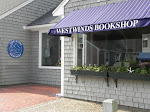Recently my friend Kay e-mailed the font blurb from the back of the book she'd been reading. "I thought quite poetic, especially re: typeset" she added.
Carl Scarbrough
Minion typeset: ".... eye toward overall harmony..contemporary face makes full use of the qualities that Slimbach,( who developed this in 1990), found most appealing in the type sets of 15th and 16 centuries..easy, economical, its name reflects its adaptable, affable and almost self-effacing nature referring as it does to a small size of type, a faithful or devoted servant, and a small kind of peach. "
Blogger limits my font choices. The blurb ☝ is actually set here in Helvetica, groundbreaking back in the day. It has its own documentary. ☟
I'm typing in Georgia typeface. (I love the g. The font choice for my daughter's wedding invitation was based on the look of key letters.)
My friend Nancy e-mails in Papyrus
which some think overused commercially.
Typeface choices, design, even opinion is an art unto itself. (☝ Click here, too) Alas, blogging about typeface is akin to herding cats. I'm already off in disparate directions. What I meant to address was Kay's e-mail. It sent me to my bookshelf in search of other font blurbs. I went through a dozen hard covers, from the life of Churchill to The Cider House Rules. 1 from the library, 5 or 6 from the book exchange at the dump, a few Christmas gifts, and another bought for my NJ book club.
To my surprise, I only found 3 with font information & each was: A Note on the Type. Disparate titles...
- Arthur Ashe's 1993 memoir Days of Grace
- Joan Didion's 2005 The Year of Magical Thinking
- Sue Miller's 2008 novel The Senator's Wife.
Which of course sent me to Google. Again in Helvetica:
Alfred Knopf revived the colophon, and it is rare that a Knopf book is issued without the page devoted to “A Note on the Type in Which This Book Has Been Set.” Here, in addition to a short history of the type, appears further information concerning the name of the printer, the binder, and the designer. Because the book is already above the average of trade-produced books, the reader becomes conscious of the part that the printer plays in its design. Unquestionably, ordinary readers are thus prompted to become more aware of well-planned books.
Click ☞ Take a look for yourself
I've been at this writing business since cut & paste was cut & paste. As writers we're limited. We spend all day typing in publishing required 12 point serif fonts, usually Times New Roman or Courier. As readers? It could be anything from Bodini or Requiem to Centaur bringing the story to life.
The art of the written word hand in glove with the art of the printed page. And more than ever, the electronic page.
THE CHICK PALACE
The art of the written word hand in glove with the art of the printed page. And more than ever, the electronic page.
* * * * * *
Since all this builds a hankering for reading, hop on over to Barnes & Noble or Amazon.
Grab your Nook or Kindle and take a look.
Grab your Nook or Kindle and take a look.
THE CHICK PALACE
A lakeside romp fueled by friendship, family, and one old flame
not averse to once again testing the waters
(Trebuchet typeface ☝)










5 comments:
Love this! Sharing on my blog right now.
If you ever visit the Eudora Welty House in Jackson, or perhaps see it on PBS, there's a wonderful short film of Miss Welty doing her "cut and paste" thing. Typewritten pages spread across the guest room bed, or maybe the dining room table, CUT and ready to PASTE.
I'm sure the font was not beautiful via typewriter, but something quite pure about that, in the olden days...
This is great! I would love to think more about font but can't barely get past the plot ;-). I would like to share this on my blog too. But really there is an article here that could go to some writerly journal no?
This is great. I would love to put more time into font but then I can barely get the plot down ;-). Would also like to share on my blog..but really? This should be an article somewhere.
This is a wonderful blog! It has put me in mind of many years of learning everything there was to know about fonts. Marking up manuscripts or ad copy with perfect proofreader's marks...sending it to the typesetter to be set upside down and backwards in lead type and printed out on long galley paper to be tweaked to perfection and sent back to the typesetter.
I still have my special galley scissors in a place of honor
in a holder beside my computer! Oh, what a wonderful time in this creative process!
I had lost track of this email exchange -- thank you so much! Am personally a fan of Bookman for the style of the serifs, but it's always hard to choose. Love your thoughts on the whole process, as usual. We are complete geeks.
Post a Comment